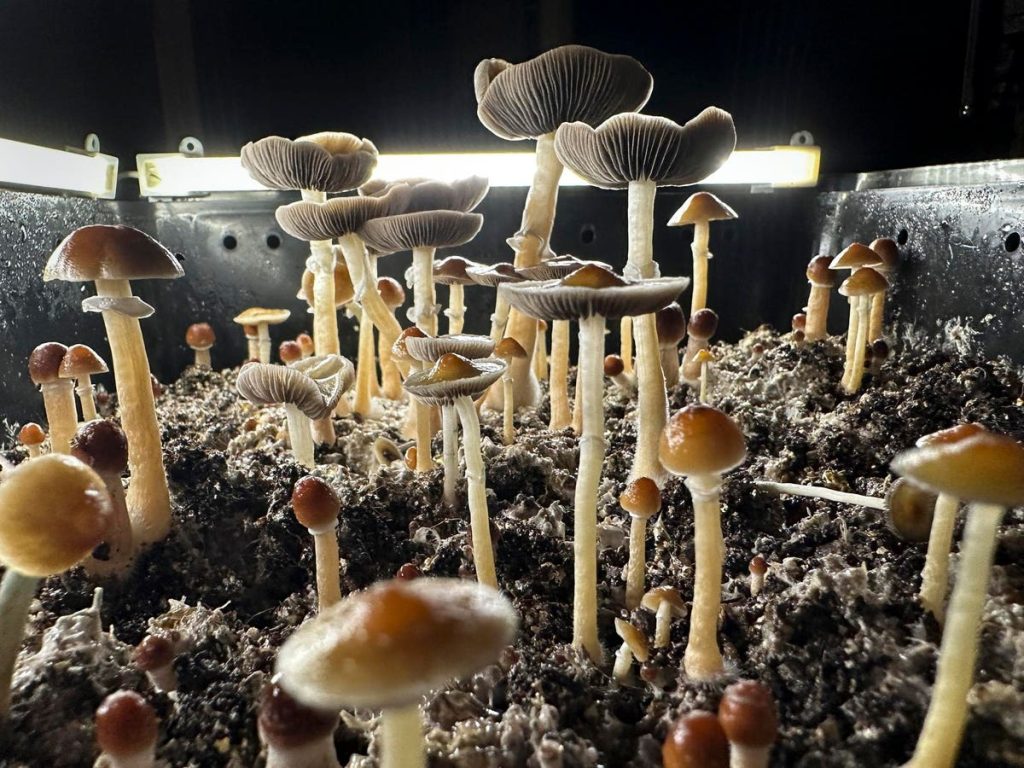Could psilocybin be on a trip to become a standard treatment for depression? Well, things are looking quite promising if you read the ‘shroom correctly. The latest evidence comes from a Phase 2 clinical trial that studied the use of psilocybin to treat people with major depressive disorder. Study participants who had received just one dose of psilocybin had significantly less severe symptoms than those receiving placebo as long as 43 days into the trial, as described in a new publication in JAMA.
Now, just because psilocybin is the psychedelic substance found in magic mushrooms, doesn’t mean that it simply acts via magic. Previous scientific studies have suggested that psilocybin can have a real effect on your brain by binding and activating serotonin 2A (5-HT2A) receptors there. Serotonin is a pretty important naturally-occurring neurotransmitter…that’s if you think your mood, your thinking, your memory, and whether or not you vomit are important. Yes, you can thank serotonin levels at least to some degree the next time you vomit when thinking about your past significant others. By activating such serotonin receptors, psilocybin could actually help rewire the brain and increasing its interconnectedness and flexibility, as I have described previously for Forbes. And a more connected and flexible brain could be better than a disconnected and rigid brain.
Previous studies have also already suggested that psilocybin might be an effective treatment for depression. The key operative word here. though, is “suggested” since these prior studies have had relatively small numbers of participants. They haven’t really shown how long the beneficial effects of psilocybin may persist either. So, the long and short of it is that more studies have been needed.
Enter this latest trial—which was conducted from December 2019 through June 2022 across 11 different sites in the U.S. For this trial, the research team recruited 104 participants who had documented diagnoses of moderate-to-more severe major depressive disorder for at least 60 days. All of the participants were in the 21 to 65 year age range with an average age of 41.1 years and Half of the participants were women.
The research team then randomly assigned about half (51) of the participants to receive a single 25 mg dose of psilocybin and the rest (53) to receive a single 100 mg dose of niacin, a placebo. This was a double-blinded study, as neither the study personnel nor participants could not tell who was receiving what during the trial. hey even made the capsules to look identical so that one couldn’t tell which was psilocybin and which was niacin until after the trials was completed. This wasn’t done simply to confuse the heck out of everyone. It was important to do so to help make sure that people weren’t reporting changes in symptoms simply because they believed that psilocybin would have an effect.
In addition to getting these treatments, participants also received psychological support. After all, no one should expect any pill to “magically” remove depression symptoms whether it is an anti-depressant medication manufactured by a pharmaceutical company or something like psilocybin. Treatment of depression should always include at least some form of counseling.
In order to track what happened to the symptoms of depression, the researchers took MADRS into their own hands, so to speak. They used the Montgomery-Asberg Depression Rating Scale (MADRS) to measure the severity of the participants’ depression symptoms at different points during the trial. In case it MADRS, this scale produces a score than can range from 0 to 60, the higher the score the more severe the depression. They also used the Sheehan Disability Scale to measure the impact of the depression symptoms.
Here’s a re-cap of what the researchers found in this magic mushroom substance trial. Those in the psilocybin treatment group experienced greater drops in MADRS scores than those in the placebo group at the eight-day (on average 12 points greater) and 43-day mark (on average 12.3 points greater). The psilocybin treatment group also had on average a 2.31 lower score on Sheehan Disability Scale baseline to day 43.
One caveat is that those in the psilocybin treatment group did appear to experience more adverse events. A significantly higher percentage (82%) of the people in the psilocybin group than those in the placebo group (44%) reporting having at least one treatment-related adverse event. Most of these were considered mild-to-moderate adverse events, though. Through Day 9, four of the 50 participants who had received psilocybin had reported serious adverse events: with one having a migraine, another having a headache, a third experiencing illusions, and a fourth suffering a panic attack and paranoia. By comparison, no one in the niacin placebo group reported any serious adverse events.
Consider all of this to be growing evidence that the stuff in magic mushrooms could potentially be an effective treatment for depression. Of course, this isn’t the end of the trip to its approval as a treatment. More studies will be needed to determine the safety and efficacy of psilocybin over longer periods of time and across broader populations. But the results to date have been encouraging. There is certainly ‘shroom for more depression treatments since existing medications have many potential drawbacks, including a range of side effects. So, this is a real opportunity to really break the mold, so to speak, when it comes to depression treatment.
Read the full article here










